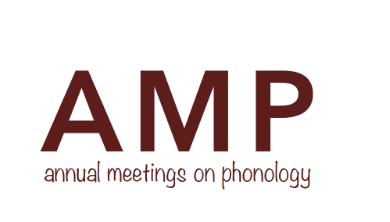Phonological Selection in Small Sublexicons
Abstract
Affixal phonological selection tends to be coarse-grained rather than granular. Stress, syllable count, and C/V composition figure in many examples, while subsegmental/featural generalizations are less common. I argue that this is a consequence of statistical learning. When the learning dataset is comparatively small, only coarse generalizations are reliable. My case study investigates the Russian suffix -ast, which predominantly attaches to body part nouns to form adjectives (e.g., [glaz-ast-ij] 'big-eyed'). There are only 17 lemmata in common usage, and they respect a size limit (mono- and disyllables). I show that the disyllabic maximum is productive in a corpus study, and that productive use shows frequency matching for syllable count to the learning data but not to nominal stems in general. By contrast, fine-grained featural generalizations about the stem-final consonants appear to be largely ignored in productive use. Speakers extend the suffix to featural contexts unseen in learning data, assuming that the sparse sample is representative--a conclusion supported by the composition of the lexicon. I relate my findings to the Subcategorization Frame theory of selection, the modular separation theory of Scheer (2016), and tolerance theory of Yang (2016).
How to Cite:
Gouskova, M., (2025) “Phonological Selection in Small Sublexicons”, Proceedings of the Annual Meetings on Phonology 1(1). doi: https://doi.org/10.7275/amphonology.3020
Downloads:
Download PDF
1030 Views
152 Downloads
